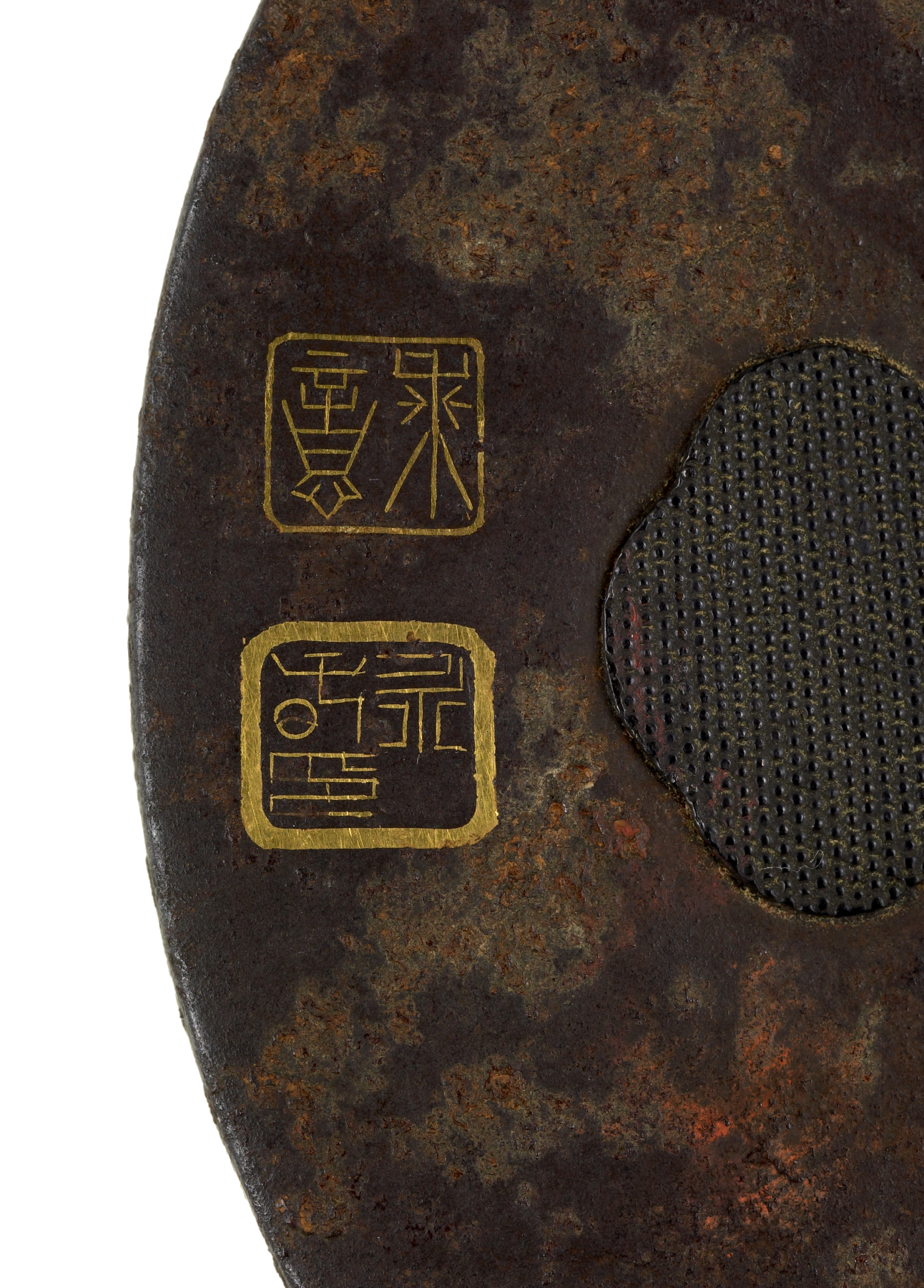Tsuba with Kanzan and Jittoku
(Japanese Military Armor)
The two Zen eccentrics Kanzan (Ch. Hanshan [Hanshan]) and Jittoku (Ch. Shide [Shih Te]) are shown on the lower edge of this tsuba. Kanzan sits reading his scroll and laughing. Jittoku stands behind Kanzan, pointing the sky. In his left hand can be seen the handle of his broom. They were said to have lived in a monastery in China when they spoke to each other in a language no one understood. Depictions of them are common. The seals on the reverse identify the artist, who was probably a Buddhist monk by the time he made this piece.
Inscription
Provenance
Provenance (from the French provenir, 'to come from/forth') is the chronology of the ownership, custody, or location of a historical object. Learn more about provenance at the Walters.
Henry Walters, Baltimore [date and mode of acquisition unknown]; Walters Art Museum, 1931, by bequest.
Geographies
Japan, Tokyo (Edo) (Place of Origin)
Measurements
3 x 2 7/8 x 3/16 in. (7.63 x 7.3 x 0.55 cm)
Credit Line
Acquired by Henry Walters
Location in Museum
Not on view
Accession Number
In libraries, galleries, museums, and archives, an accession number is a unique identifier assigned to each object in the collection.
In libraries, galleries, museums, and archives, an accession number is a unique identifier assigned to each object in the collection.
51.286






